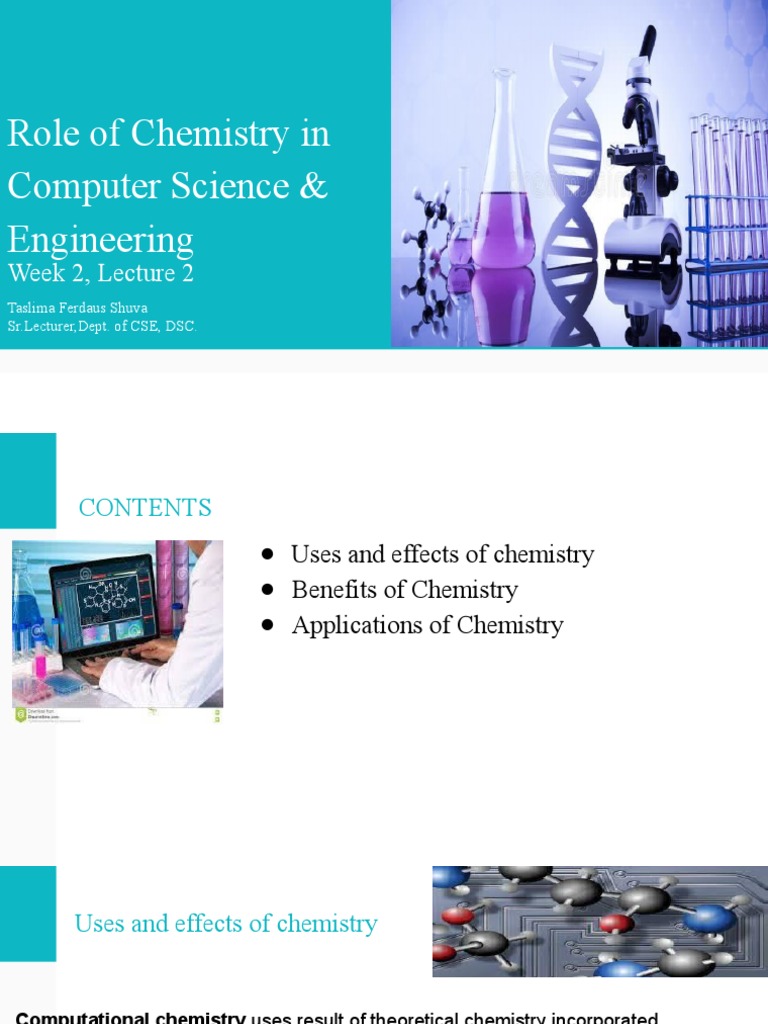In the ever-evolving realm of technology, the role of chemistry often eludes the appreciation it merits, particularly within the purview of computer engineering. This intersection, which may seem inconspicuous at first glance, reveals a plethora of vital applications that promise to enhance the efficacy and sustainability of technological advancements. Exploring the amalgamation of chemistry and computer engineering invites a refreshing perspective and garners intrigue regarding the multifaceted capabilities of engineers in the digital age.
The Underpinning of Materials Science
Chemistry serves as the cornerstone of materials science, a discipline crucial to computer engineering. The semiconductor industry, pivotal in the realm of computers, heavily relies on chemical principles. For instance, understanding the electronic properties of various materials enables engineers to develop semiconductors that are integral to transistors, integrated circuits, and microprocessors. The synthesis of silicon, the quintessential semiconducting material, illustrates how chemical reactions facilitate the creation of components that power modern electronics.
Innovations in Nanotechnology
Moreover, the burgeoning field of nanotechnology merits attention. At the nanoscale, chemical properties change dramatically, allowing for the synthesis of novel materials that exhibit unique electrical, optical, and mechanical properties. Computer engineers can harness these materials to fabricate devices that are not only smaller and faster but also more energy-efficient. The development of quantum dots and carbon nanotubes is a testament to how chemical innovation can propel computational capabilities into unprecedented territories.
Renewable Energy Solutions
Another significant contribution of chemistry to computer engineering lies in the development of renewable energy solutions. As engineers grapple with the dire need for sustainable technologies, chemistry offers pathways to enhanced energy storage systems, such as advanced lithium-ion and solid-state batteries. This is particularly relevant for mobile computing devices that demand high energy efficiency while minimizing environmental impact. The electrochemical principles underlying these systems are illustrative of how interdisciplinary knowledge fosters innovation in energy solutions.
Integration in Manufacturing Processes
Additionally, the manufacturing of computer components significantly benefits from chemical processes. Techniques such as photolithography, essential in creating intricate circuit patterns, depend on chemical reactions to manipulate materials at the micro and nanoscale. Understanding the chemical interactions during these processes ensures precision and reliability in component fabrication, ultimately leading to superior performance in computer systems.
Sustainability through Green Chemistry
Sustainability is a predominant concern in contemporary engineering. The concept of green chemistry promotes the development of processes that minimize waste and reduce hazardous substances. By integrating green chemistry principles into computer engineering, the industry can reduce its carbon footprint. Engineers can optimize the life cycle of electronic products, creating devices that are not only efficient but also environmentally responsible. This shift towards sustainability opens the door for innovative recycling methods and biodegradable materials, promising a more circular economy in the tech sector.
Biomimicry in Computational Design
Biomimicry, the practice of drawing inspiration from natural processes, also finds a place where chemistry and computer engineering converge. By studying the chemical processes that underlie biological systems, engineers can devise algorithms and computational models that mimic these natural phenomena. This has led to advancements in artificial intelligence and machine learning, where chemical principles can inform the development of neural networks that mirror human cognitive functions. Such interdisciplinary endeavors highlight the boundless potential of integrating different scientific domains.
Understanding the Human-Machine Interface
Another pivotal aspect of computer engineering that benefits from chemical insights is the advancement of human-machine interfaces (HMIs). The development of materials that can effectively convey information through touch, sound, or visual cues requires an understanding of the chemical properties of conductive polymers and other intelligent materials. These materials must exhibit optimal responsiveness and durability, ensuring seamless interaction between users and machines.
The Future of Quantum Computing
As we delve into the future of computing, the prospects of quantum computing emerge as a beacon of potential. Quantum computers operate on principles governed by quantum mechanics, intrinsically tied to chemistry. The manipulation of qubits, which can exist in multiple states simultaneously, hinges on a fundamental grasp of chemical interactions. Computer engineers engaged in quantum computing must not only be adept in coding but also possess a profound understanding of the chemical processes that enable the functionality of quantum systems. This intersection is poised to redefine computational limits and inspire groundbreaking innovations.
Conclusion: Embracing the Convergence
The utilization of chemistry in computer engineering transcends mere utility; it embodies a transformative synergy that fosters remarkable advancements across numerous domains. By comprehending the interdependencies between these fields, computer engineers position themselves at the forefront of innovation, shaping the future of technology. As the realm of possibilities expands, a renewed curiosity about the chemical undercurrents that influence technological progress will encourage the development of solutions that not only fulfill present demands but also anticipate future challenges. Embracing this interdisciplinary approach promises a future where chemistry and computer engineering coalesce, yielding a plethora of opportunities to revolutionize the landscape of modern technology.












